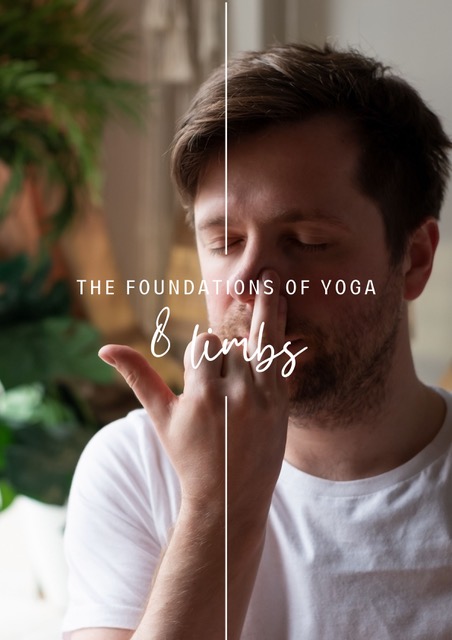The Foundations of Yoga: Understanding the Eight Limbs

Yoga, often misunderstood as merely physical exercise, is a holistic practice encompassing various aspects of life. At its core are the Eight Limbs of Yoga, as outlined by the sage Patanjali in the Yoga Sutras. These limbs serve as a guide for spiritual growth and self-realisation. Understanding these foundational principles is essential for anyone embarking on a yoga journey.
 The first limb, Yama, consists of moral principles governing our behaviour towards others and the world around us. It includes concepts such as non-violence (Ahimsa), truthfulness (Satya), and non-greediness (Asteya). Practicing Yama cultivates harmony and respect in our interactions.
The first limb, Yama, consists of moral principles governing our behaviour towards others and the world around us. It includes concepts such as non-violence (Ahimsa), truthfulness (Satya), and non-greediness (Asteya). Practicing Yama cultivates harmony and respect in our interactions.
Niyama, the second limb, focuses on self-discipline and inner observances. It involves practices like cleanliness (Saucha), contentment (Santosha), and self-study (Svadhyaya). Niyama encourages personal growth and introspection, fostering a sense of inner peace and fulfillment.
Asana, the third limb, is what most people associate with yoga – physical postures. However, these postures are not just exercises but tools for cultivating physical health, mental clarity, and spiritual awareness. Through mindful movement, practitioners learn to balance strength and flexibility while quieting the mind.
Pranayama, the fourth limb, explores breath control techniques. Conscious breathing exercises help regulate the flow of prana (life force energy) in the body, promoting vitality and mental focus. Pranayama techniques range from simple deep breathing to advanced practices like alternate nostril breathing.
The fifth limb, Pratyahara, involves withdrawing the senses from external distractions. In today’s world filled with constant stimulation, this practice is especially relevant. By turning our attention inward, we can develop greater self-awareness and concentration.
Dharana, the sixth limb, is concentration or single-pointed focus. Through practices like visualisation or mantra repetition, we train the mind to remain steady and undistracted. Dharana lays the foundation for deeper states of meditation.
Dhyana, the seventh limb, is meditation itself – a state of heightened awareness and inner stillness. In meditation, we transcend the chatter of the mind and connect with our true essence. Regular meditation practice brings profound benefits for mental, emotional, and spiritual well-being.
The eighth and final limb, Samadhi, is the ultimate goal of yoga – union with the divine or the highest state of consciousness. In Samadhi, the individual ego dissolves, and we experience pure awareness beyond duality. While rare and fleeting for most practitioners, glimpses of Samadhi can inspire and guide our spiritual journey.
Incorporating the Eight Limbs of Yoga into our lives is a transformative process. It requires dedication, patience, and self-reflection. By embracing these principles both on and off the mat, we can cultivate a deeper understanding of ourselves and our place in the universe. Yoga becomes not just a physical practice but a path to profound spiritual awakening and inner peace.
